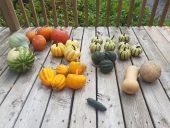
 3
3





 1
1




List of Bryant RedHawk's Epic Soil Series Threads We love visitors, that's why we live in a secluded cabin deep in the woods. "Buzzard's Roost (Asnikiye Heca) Farm." Promoting permaculture to save our planet.
 1
1




 2
2




Sometimes the answer is nothing

















List of Bryant RedHawk's Epic Soil Series Threads We love visitors, that's why we live in a secluded cabin deep in the woods. "Buzzard's Roost (Asnikiye Heca) Farm." Promoting permaculture to save our planet.
 2
2




Sometimes the answer is nothing













 4
4




List of Bryant RedHawk's Epic Soil Series Threads We love visitors, that's why we live in a secluded cabin deep in the woods. "Buzzard's Roost (Asnikiye Heca) Farm." Promoting permaculture to save our planet.




Idle dreamer
 1
1




 3
3




Idle dreamer
 2
2




 1
1
















Other people may reject you but if you lie in the forest floor for long enough the moss and fungi will accept you as one of their own!







| I agree. Here's the link: http://stoves2.com |






